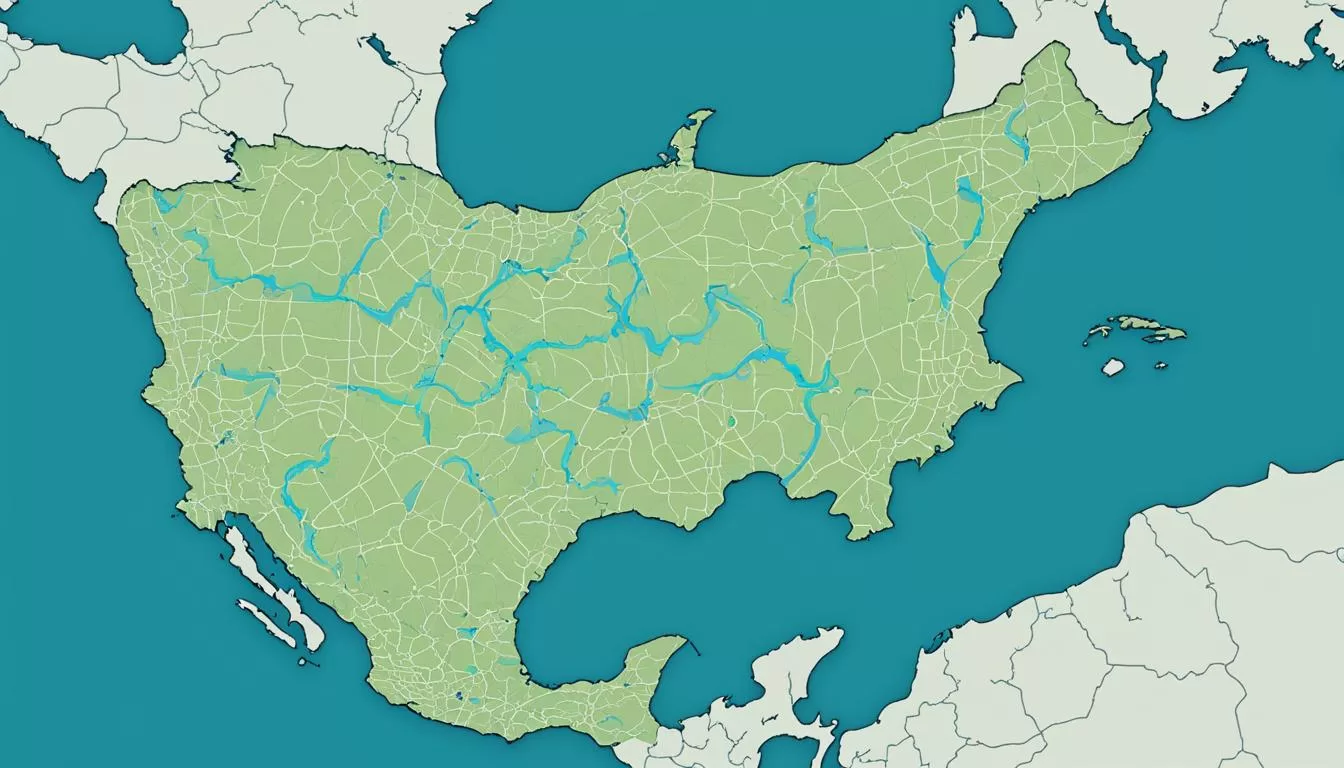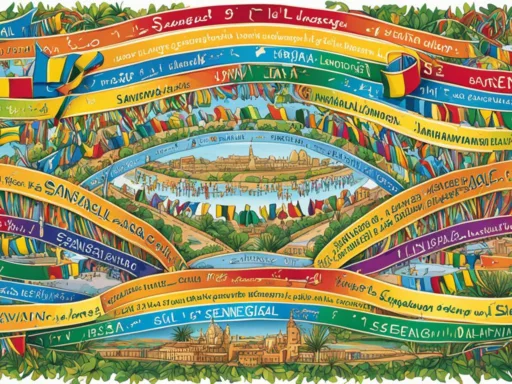Colombia emerges as a cauldron of cultural and linguistic diversity, boasting an incredibly rich tapestry woven with the threads of numerous languages spoken in Colombia. At the heart of the nation’s communication lies its official languages in Colombia, Spanish, radiating through the vibrant Colombian society. Yet, the linguistic landscape extends far beyond, brimming with an impressive array of indigenous languages in Colombia, each adding depth and color to the nation’s collective voice. From the bustling cities to the serene, verdant countryside, these tongues tell stories of heritage, identity, and unity — encapsulating the true spirit of Colombia’s multifarious communities.
Key Takeaways
- Spanish serves as the linguistic cornerstone for over 99% of Colombians, affirming its status as the primary means of communication.
- Colombia is home to a plethora of indigenous languages, grouped into several language families and isolates, reflecting the country’s deep historical roots.
- Minority languages, including Creole dialects and Romani, contribute to the intricate linguistic mosaic of Colombian society.
- On the idyllic San Andrés, Providencia, and Santa Catalina Islands, English enjoys official language status, touching on Colombia’s historical connections.
- The presence of language education programs underscores Colombia’s commitment to linguistic diversity and global interconnectedness.
- Current efforts are in place to preserve and promote the use of Colombia’s native tongues, highlighting their cultural and societal importance.
The Role of Spanish in Colombian Society
Within the cultural quilt that makes up Colombia, the Spanish language not only holds official status but is also intricately woven into everyday life. The distinct version known as Colombian Spanish carries with its unique nuances that set it apart from other variants across the Spanish-speaking world. It stands as a testament to the nation’s geographical and cultural diversity, echoing through the valleys of the Andes and the shores of the Caribbean.

Embarking on a journey to understand Colombian Spanish is to uncover the vivid regional dialects that paint an elaborate linguistic landscape. From the Caribbean coast to the Amazonian rainforest, each area imbues its dialect with local color, flavor, and history, making the study of dialects of Spanish Colombia a vibrant exploration of the country’s heartbeat.
Understanding Colombian Spanish and Its Regional Dialects
Regional dialects of Spanish in Colombia, such as the distinct Palenquero, San Andrés-Providencia Creole, and Andean Spanish, serve as hallmarks of the country’s rich cultural tapestry. These dialects reflect not only the influences of Colombian geography but also its complex history, embodying the interconnectedness of the global and local narratives that shaped the nation.
Prevalence of Spanish in Colombia’s Communication
The prominence of Spanish Colombia cannot be overstated, with an overwhelming majority of the population—around 99%—navigating their daily lives through this language. This prevalence cements Spanish as the cornerstone of Colombian Spanish communication, pivotal in everything from education to business, politics to entertainment. While regional dialects offer a mosaic of expressions, it’s the underlying unity in the use of Spanish that constitutes the essence of Colombia’s linguistic identity.
Indigenous Languages and Their Cultural Significance
The mosaic of Colombia’s linguistic heritage is not defined by Spanish alone but also by the rich array of indigenous languages Colombia harbors. Deep within the nation’s roots lie 65 recognized indigenous languages, resonating the resilience and cultural wealth of its people.

These languages form an integral component of Colombia’s social fabric, serving as a conduit for transmitting stories, wisdom, and traditions through generations. Extending beyond mere communication, they embody the soul of Colombia’s linguistic diversity, with each language offering insight into the lives and philosophies of its speakers.
The intricate complexity of these languages is classified into 12 language families and 10 language isolates, presenting a kaleidoscope of linguistic patterns, structures, and sounds that vary from one community to another. This not only underscores the sheer variety within the linguistic diversity Colombia showcases but also the cultural individuality intrinsic to each language community.
- Chibchan languages, tracing probable roots to Central America
- Arawakan, Cariban, and Quechuan, proud representations of the great South American language families
- Sundry regional language families
Among these vibrant tongues, Chibchan stands out as one of the most widespread, echoing through the Colombian highlands and beyond. Southward, the Arawakan and Cariban families narrate stories of migrations and inter-tribal relations, while the Quechuan languages, relics of the mighty Inca Empire, weave together the past with the present.
Observing these languages is to witness a living library of Colombia’s history, where each syllable spells out eons of existence and interactions with the land and other cultures. Protecting these indigenous languages of Colombia is thus crucial not just for maintaining communication, but also for preserving the diverse identity and profound heritage of Colombia.
The struggle for recognition and revival continues, spearheaded by various indigenous communities and supported by dedicated linguists and cultural advocates. As custodians of a precious element of human knowledge, their effort is a testament to the importance of linguistic conservation in a rapidly globalizing world.
Languages Spoken Colombia: A Diversity of Tongues
Colombia’s linguistic heritage is rich and varied, not only in its idiomatic Spanish but also through a diverse spectrum of minority and foreign languages. These languages offer a window into the global connections and intricate societal dynamics at play within the country. Even as Spanish serves as the lingua franca, the presence of indigenous languages—over 65 in total—contributes a multiplicity of voices to Colombia’s national dialogue. Moreover, beyond these Amerindian tongues, other languages are spoken that reflect the country’s cosmopolitan character and its interactions with the world.

An exploration of foreign languages Colombia reveals an enduring influence of English, likely due to the nation’s historical links with English-speaking regions and the ubiquitous presence of English-language media. This prevalence marks English as a significant foreign language in Colombia, widely recognized and spoken, especially in the larger cities and touristic areas. Additionally, Portuguese and Romani are among other languages embellishing the cultural landscape, particularly in urban centers where diverse populations foster vibrant multilingual communities.
The vast mosaic of minority languages Colombia is indicative of the various ethnic groups and their influences on the nation’s culture. The rich tapestry includes:
- Portuguese, heard along the border regions and in pockets of cosmopolitan urbanity, hinting at the entwined histories and cultural exchanges with neighboring Brazil.
- Romani, the language of the itinerant Romani people, resounding in major cities and contributing to the intricate cultural quilt.
Here, then, is a visual enumeration of these languages, showing their dispersion and impact:
| Languages | Popularity | Regions of Influence |
|---|---|---|
| English | Common | Major Cities, Touristic Spots |
| Portuguese | Minority | Border Regions |
| Romani | Rare | Urban Centers |
The aspiration for a globally-connected Colombia gleams through the utilization of these foreign languages, with each serving as a channel through which Colombians can engage with the world. The value placed on linguistic diversity, inclusive of minority languages Colombia, reflects a broader societal appreciation for the role language plays in shaping a culturally and intellectually wealthy nation. Teaching and celebrating these tongues is a step toward sustaining Colombia’s unique global identity and preserving its vibrant cultural heritage.
Recognized Regional and Minority Languages
While the symphony of Spanish reverberates across Colombia, a medley of regional and minority languages richly contribute to the nation’s linguistic diversity. These languages offer invaluable insights into Colombia’s historical affiliations and cultural fabric.
English in the San Andrés, Providencia, and Santa Catalina Islands
In the crystalline waters of the Caribbean, English in Colombia takes on a distinctive role as an official language on the San Andrés, Providencia, and Santa Catalina Islands. This reflects a storied connection with the United Kingdom, woven into the islands’ heritage and daily interactions. Here, English is not merely a second language; it coexists with Spanish, shaping the islands’ identity.
Creoles of Colombia: San Andrés Creole and Palenquero
Amidst the lush landscapes, the vibrancy of Creole languages in Colombia is epitomized by San Andrés Creole. This language blend, anchoring itself in English-Creole origins with Spanish undercurrents, serves as a living bridge between Caribbean island cultures. Notably, the San Andrés Creole echoes dialects from neighboring Nicaragua and Costa Rica, further showcasing the Caribbean’s shared linguistic heritage.
On Colombia’s mainland, a unique creole tongue endures. Palenquero, born from the hearts of African slaves who forged their societies in palenques, breathes the legacy of freedom and resilience. The language stands as a testament to centuries of persistence, particularly in the legendary community of San Basilio de Palenque, which valiantly repelled external incursions and flourished as a beacon of autonomy.

Indigenous Languages Still Flourishing
The tapestry of Colombia’s languages would not be complete without the enduring voices of indigenous tongues. These languages serve as pillars of cultural preservation, maintaining the narratives and traditions of various native communities across the nation. Their continued vitality in Colombia is a heartening sign of the country’s dedication to safeguarding its rich cultural past while navigating the modern world.
From the vast spectrum of indigenous language families to the still-flourishing language isolates, Colombia’s commitment to linguistic diversity and cultural legacy is unwavering. It is this pursuit of language preservation that enriches Colombia’s national identity and sustains its distinctive echo amidst the global community.
Foreign Languages Education and Usage in Colombia
In the realm of education, Colombia has shown a forward-thinking approach in its emphasis on foreign languages education Colombia. Students across the country are encouraged to broaden their linguistic skills beyond the ubiquity of Spanish, embracing English as a second language of choice. This focus on English as a favored foreign language mirrors its international significance and its utility as a conduit for global discourse, making it a cornerstone of the educational system in Colombia.
English as a Favored Foreign Language
Driven by the goal of creating a bilingual nation, Colombia’s educational frameworks place a strong emphasis on English language proficiency. This initiative extends from primary schools to tertiary institutions, weaving English language education into the fabric of the curriculum. The widespread promotion of English Colombia ties in neatly with the nation’s broader objectives of enhancing competitiveness and fostering international collaboration, preparing Colombian students for the demands of a connected world.
Other European Languages in the Colombian Landscape
Traversing beyond Anglophone influences, Colombia’s linguistic learning environment is equally receptive to other European tongues. French Colombia, German Colombia, and Italian Colombia find their melodies resonating within the walls of educational establishments and cultural institutions. These languages represent the European facets of Colombia’s rich cultural tableau, with dedicated language schools and bilingual programs underscoring an affection for the arts, diplomacy, and international trade linked to these languages. In parallel, the mellifluous rhythms of Portuguese Colombia echo at the borderlands adjoining Brazil and in the hearts of communities intertwined with their neighbor’s culture, fostering cross-cultural literacies in the process.
Educational strategies geared toward fostering fluency in these foreign languages reflect Colombia’s vision of contributing to a culturally aware and globally adept society. Invariably, the value dispensed to foreign languages education Colombia catalyzes a continuum of opportunities for Colombians to engage with a world that is becoming smaller by the day, thanks to the threads of communication that bind us all.
FAQ
What are the official languages spoken in Colombia?
Spanish is the official language of Colombia, spoken by the vast majority of the population. In addition to Spanish, English holds official status in the San Andrés, Providencia, and Santa Catalina Islands.
Are there many dialects of Spanish in Colombia?
Yes, Colombia boasts a variety of Spanish dialects, including Andean, Amazonic, and Equatorial Spanish, reflective of its diverse geography and cultural influences.
How prevalent is the use of Spanish in daily communication in Colombia?
Spanish is extremely prevalent in Colombia, used by approximately 99% of the population for everyday communication, cementing its role as the dominant language.
What is the significance of indigenous languages in Colombia?
Indigenous languages in Colombia are key carriers of the country’s rich cultural heritage. They uphold the historical narrative, cultural diversity, and the linguistic heritage of the different regions within Colombia.
Are indigenous languages still widely spoken in Colombia?
Yes, there are 65 recognized indigenous languages spoken by over 850,000 people in Colombia. These languages are grouped into 12 language families and 10 language isolates, showing the vast linguistic diversity present in the country.
What other foreign languages are spoken in Colombia?
Aside from Spanish and indigenous languages, Colombia is also home to a variety of foreign languages, including Portuguese, Romani, English, and Creoles. Additionally, many Colombians learn European languages such as French, Italian, and German.
Is English widely spoken in Colombia?
While Spanish is the predominant language, English is also widely taught and spoken, particularly in the San Andrés, Providencia, and Santa Catalina Islands, where it has official status. English is also a popular foreign language due to global influences and is commonly used in business and tourism.
What are the Creole languages of Colombia?
Colombia has two Creole languages: San Andrés Creole, which has English and Spanish influences and is spoken on the islands of San Andrés, Providencia, and Santa Catalina; and Palenquero, a Spanish-based creole spoken in the village of San Basilio de Palenque on the mainland.
Are there endangered indigenous languages in Colombia?
Yes, some indigenous languages in Colombia are endangered due to the diminishing number of speakers, cultural assimilation, and the dominance of Spanish. Efforts are underway to preserve and revitalize these languages.
What role does foreign language education play in Colombia?
Foreign language education is integral in Colombia, with English being a prominent focus due to its international significance. Educational institutions often offer programs in other European languages such as French, Italian, and German, reflecting Colombia’s commitment to global engagement and linguistic diversity.
How is Portuguese viewed in Colombia?
Portuguese is recognized and spoken within the country, in particular by those engaged with Brazil – Colombia’s neighbor – either through business, cultural exchanges, or communities living along the border regions.






